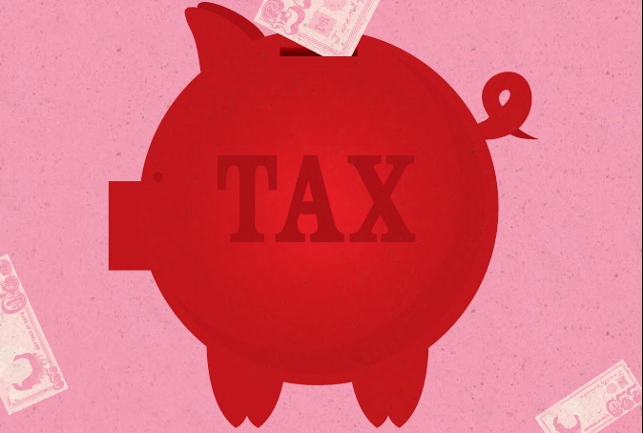In hard times engineering and manufacturing companies put R&D investment on hold. However, there is a very strong incentive for them to keep doing so.

The HM Revenue & Customs’ (HMRC) R&D Tax Credit scheme, which was first introduced in 2001, compensates businesses for those costs incurred in developing innovative products and manufacturing processes.
What are R&D Tax Credits?
In brief, R&D tax credits allow companies to deduct qualifying expenditure on R&D activities when calculating profit for tax purposes.
This means that those involved in R&D may be eligible for a substantial tax refund. “R&D tax credits are calculated by allowing a significant proportion of R&D costs to be in simple terms, counted twice in the Profit and Loss statement,” explains Dave Pepper of the MPA Group, an accountancy and tax advising firm. “This accounting exercise notionally reduces profi tability and therefore Corporation Tax liability which is refunded as rebates and credits. It covers costs in the current and the two prior years.”
“The level of relief varies between large companies of 500+ employees and small to medium enterprises (SME) falling beneath that size. The SME scheme is the more generous of the two allowing between 75 and 125 per cent of costs to be deducted,” adds Pepper.
Making a claim
Claiming R&D tax credits can be complex and businesses don’t always realise they are eligible or are deterred by the application process.
“The scheme is in place specifically for the benefit of small manufacturing businesses. Leaving aside other costs, if a business, for example incurs salaries of £100k for the time spent on R&D projects they can expect a rebate in the region of £15k or above,” says Pepper.
Who is eligible to claim?
Under HM Revenue and government guidelines, many companies in all types of industry can qualify for this financial incentive.
Richard Cullum, managing partner of R&T Consultants, R&D tax credits specialists, outlines what basic requirements are needed for a successful application (only one of which needs to be met):
• The work, project or new idea must seek to achieve an advance in the field of technology or science.
• To conduct a project that requires the company to extend overall knowledge or capability in a field of science or technology.
• To create a process, material, device, product or service that incorporates or represents an increase in a field of science or technology.
• To make an appreciable improvement to an existing process, material, device, product or service through scientifi c or technological changes.
• To use science or technology to duplicate the effect of an existing process, material, device, and product or service in a new or appreciably improved way. For example, a product which has exactly the same performance characteristics as existing models, but has been built in a fundamentally improved manner.
What can be claimed?
Eligible costs include investment in concept creation, design, prototyping, testing, validation, process improvement, materials placement, research and product development.
“It is not essential that the R&D results in a profitable new initiative, on the contrary, the scheme is in place to support entrepreneurial risk taking irrespective of market acceptance.
It recognises that for every success there will be several ideas that never make it but it is vital that we encourage the effort rather than the outcome,” says Pepper.
How to go about it
At the simplest level a company can complete form CT600 when submitting its Corporation Tax claim. However, there are good reasons to involve specialists like The MPA Group and R&T Consultants who handle all the small details and intricacy involved in interpreting the legislation, which can seem at times to be vague, open to interpretation and occasional change.
“Companies come to us because they are either daunted by the process or lack the time and/or knowledge to put together a successful application; we also run advisory sessions with R&D units of HMRC to inform businesses about the process,” says Cullum. “I would urge any company that has yet to investigate their eligibility for R&D credits to do so. After all, in the current economic climate, your company needs all the help it can get.”
The product designer’s perspective on R&D Tax Credits by Kevin Quigley, managing director of Quigley Design
On paper the R&D Tax Credits sounds ideal — spend more than £10k on R&D and claim back double your actual costs against tax.
In reality, however, there are potential pitfalls and liabilities that those working in the design sector should be aware of.
The biggest drawback is that it can only be claimed by those paying corporation tax, so limited companies and organisations only. Not a problem for many, but this immediately rules out sole traders, partnerships and limited liability partnerships.
About 40 per cent of my customers fall into these categories. When tied to design services, companies claiming the credits need to look very carefully at allowable costs.
There is an assumption that everything you buy in is allowable. It is not. In fact, I would suggest that for a typical UK product design service, almost none of the costs are allowable.
To see why, you need to look very carefully at the HMRC definition of R&D. Specifically, the project: “…It’s not enough that a product is commercially innovative. You can’t claim in respect of projects to develop innovative business products or services that don’t incorporate any advance in science or technology.”
But the real killer issue is this one: “Scientific or technological uncertainty exists when knowledge of whether something is scientifically possible or technologically feasible, or how to achieve it in practice, is not readily available or deducible by a competent professional working in the field.”
What this means, for example, is that designing a casing for electronics is not allowable. Transferring existing proven designs to another product is not allowable. There has to be uncertainty at the start of the project that the project can succeed — and that is technical uncertainty not commercial uncertainty.
My rule of thumb is that anything that went towards a patent is allowable — on the basis that the very definition of a patent is “new, novel and not obvious.” But be aware that this applies ONLY to the activities that related directly to the patent development.
From a design service perspective, working with companies that do claim this relief can result in a considerable administrative burden especially as accountancy firms and departments demand itemised detail on all activities, including all your expenses, that they want to claim against.
The Patent Box is a new relief that is coming into force in April 2013, whereby the corporation tax rate is reduced to 10 per cent of any profits attributed to patents. On paper it looks very promising.
More detail is available on the HMRC website, but my understanding of this is that if you patent something, and sell a product or service that uses the patent some profits derived from that attract the 10 per cent tax rate.
Furthermore, it appears that you attract this reduced rate even when you license the patent and receive royalties on it.
Unlike R&D Tax Credits, this one could be very relevant to the product design sector but as it is all new, it will take time for the detail to emerge.
Are you eligible for an R&D Tax Credit?
Default






